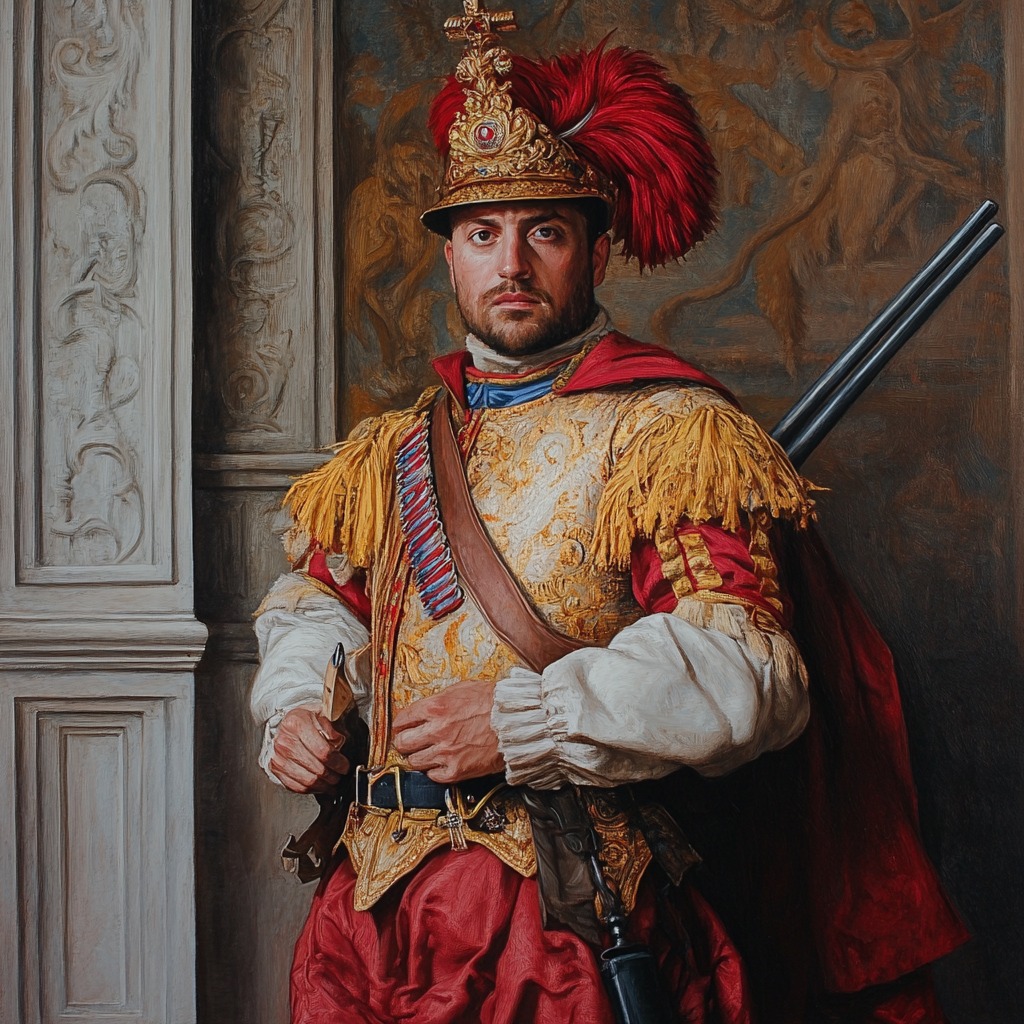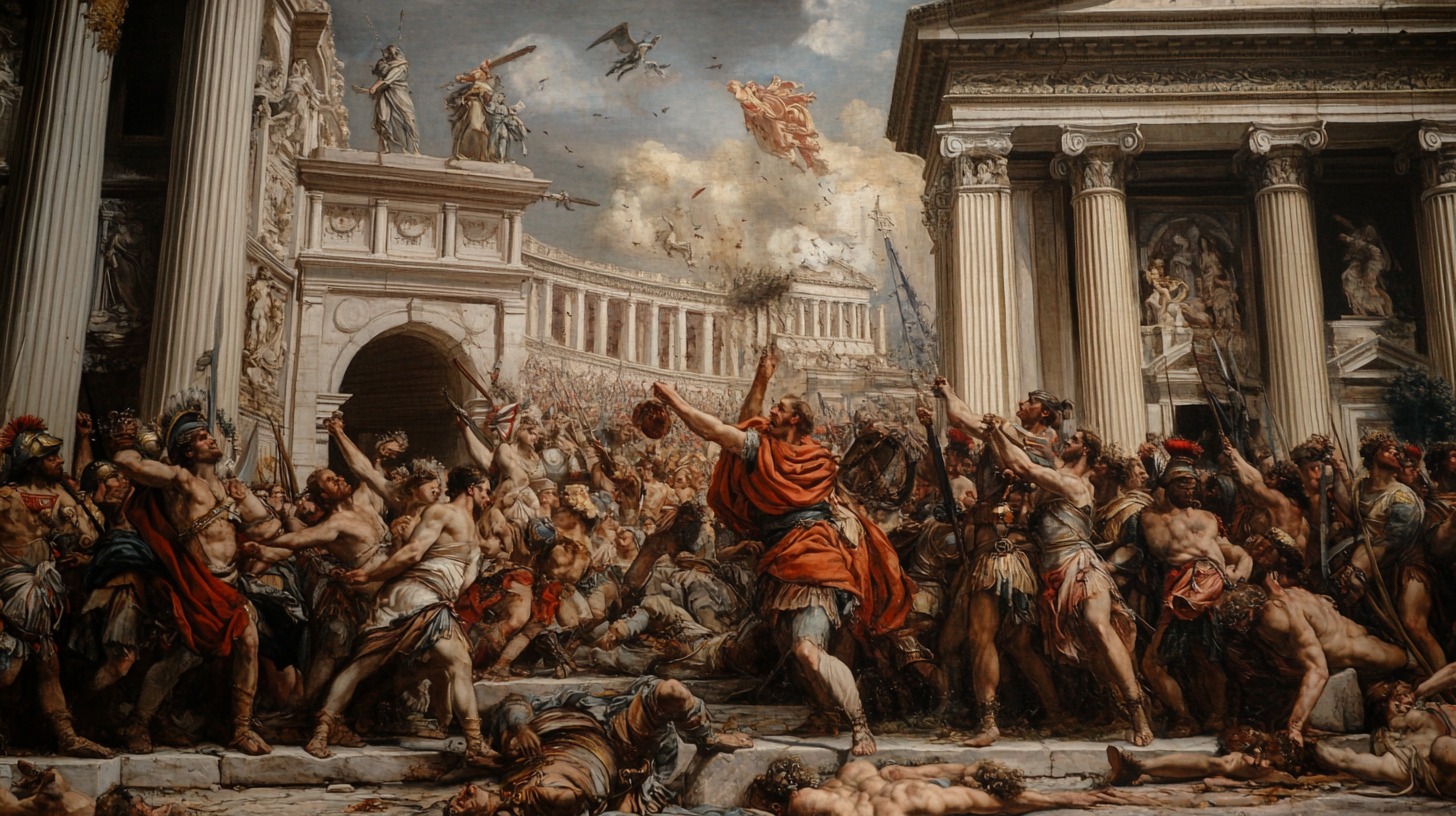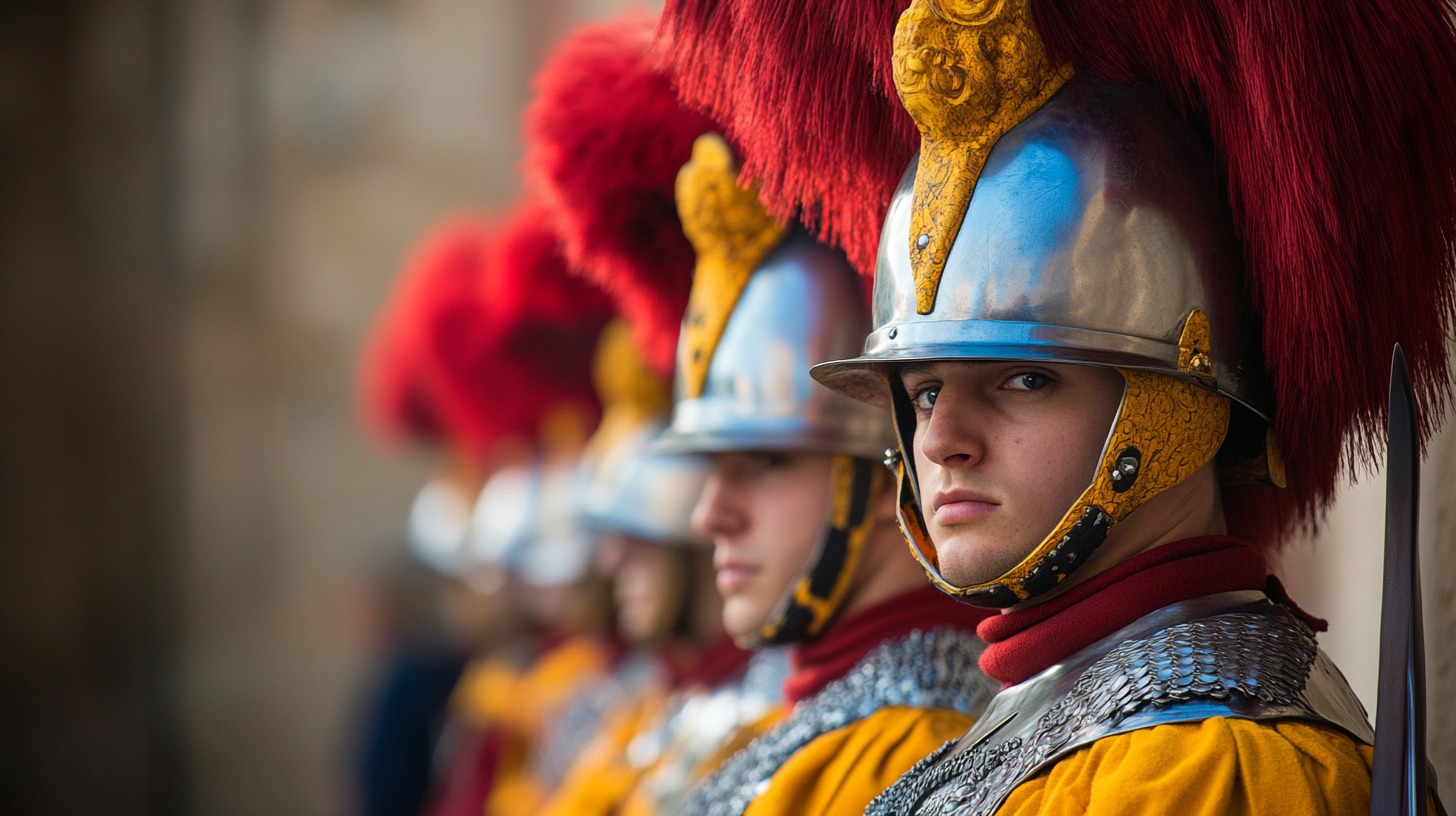The Swiss Guard serves as the personal army of the Pope, ensuring his safety while upholding centuries-old traditions.
Established in the early 16th century, these soldiers have been a constant presence in Vatican history, demonstrating loyalty and discipline.
Their role extends beyond ceremonial duties, as they have engaged in actual combat to protect the papacy. Let us talk about the history of the Swiss Guard in greater detail.
Origins of the Swiss Guard
Swiss soldiers gained recognition as formidable warriors during the late Middle Ages. Their disciplined approach to combat, combined with a reputation for strategic prowess, led European rulers to recruit them as mercenaries for their forces.
Their effectiveness in battle and unwavering loyalty made them a sought-after military asset, particularly for rulers in need of elite protection forces.
- Discipline in Warfare – Swiss soldiers followed strict formations and tactical maneuvers that made them difficult to defeat.
- Proficiency with Weapons – They excelled in the use of halberds, pikes, and early firearms, making them adaptable in battle.
- Loyalty to Employers – Once contracted, they were known for their steadfast commitment to those they served.
- Defensive Expertise – Their ability to fortify and defend strategic locations made them valuable in both offensive and defensive warfare.

Recognizing these strengths, Swiss Bishop Matthäus Schiner proposed to Pope Julius II that a dedicated Swiss force should be responsible for the protection of the Vatican. With the political climate in Europe growing increasingly volatile, the Pope saw the necessity of forming an elite force capable of defending both his people and the papal states.
In 1506, Pope Julius II officially sanctioned the creation of the Swiss Guard. That same year, the first contingent of Swiss soldiers, under the command of Captain Kaspar von Silenen, arrived in Rome.
These troops were carefully selected for their combat expertise and their ability to maintain order even in the most challenging circumstances. Their arrival marked the beginning of what would become an enduring legacy of loyalty and protection.
Key Historical Events
Throughout its long history, the Swiss Guard has played a crucial role in defending the Pope and Vatican City during times of crisis. Several key events have shaped the Guard’s evolution, reinforcing its commitment to protecting the papacy.
These moments include one of the most tragic battles in its history, a tense period of potential invasion during World War II, and a modern security transformation following an assassination attempt on Pope John Paul II.
The Sack of Rome (1527)
One of the most significant tests of the Swiss Guard’s loyalty and sacrifice occurred during the Sack of Rome in 1527. Holy Roman Emperor Charles V sent his troops to invade the city, leading to one of the darkest chapters in Vatican history.
As the enemy forces overwhelmed Rome, chaos and destruction spread rapidly, leaving the Vatican vulnerable.
- Out of the 189 Swiss Guards stationed at the Vatican, 147 were killed while defending Pope Clement VII.
- The remaining 42 Swiss Guards, aware of the imminent danger, formed a protective escort and led the Pope through the Passetto di Borgo, a fortified passage connecting the Vatican to Castel Sant’Angelo.
- To honor the bravery of those who perished, May 6 was chosen as the official swearing-in date for recruits. Every year, fresh members pledge their allegiance on this date, recognizing the sacrifice made by their predecessors.
The Sack of Rome reinforced the Guard’s importance and solidified its role as the Vatican’s first line of defense. The legacy of those who fell in 1527 continues to shape the Guard’s identity today.

World War II
While the Swiss Guard has primarily been associated with defending the Vatican against direct military threats, its role during World War II reflected a different kind of vigilance.
Vatican City remained neutral throughout the war, but its political position did not exempt it from risk.
As Adolf Hitler’s forces expanded across Europe, concerns arose regarding a potential invasion.
- Although Vatican City maintained neutrality, tensions in Europe made it a potential target. Nazi forces occupied Rome in 1943, increasing fears that the Vatican could be drawn into the conflict.
- The Swiss Guard, despite being a small force, prepared for a possible invasion. Their defense strategy included fortifying entrances, increasing patrols, and staying on high alert for any signs of an attack.
- Pope Pius XII played a crucial role in preventing direct aggression against the Vatican. His diplomatic efforts, combined with the Swiss Guard’s readiness, contributed to the city’s preservation.
Although Vatican City was never directly attacked, the Swiss Guard’s vigilance during the war underscored its ongoing responsibility to protect the Pope and the sovereignty of the Holy See.
The conflict emphasized the need for adaptability, a principle that would guide future changes to the Guard’s structure and training.
At the swearing-in ceremony of the Pontifical Swiss Guard, Swiss President @Violapamherd noted that #security is not a given, and that it is essential that Switzerland and the Vatican are committed to peace and respect for international humanitarian law. https://t.co/NvVadFnQWO
— Swiss Federal Government (@SwissGov) May 6, 2024
The 1981 Assassination Attempt on Pope John Paul II
The security of the Pope was redefined in 1981 when an assassination attempt exposed vulnerabilities in Vatican protection measures. On May 13, during a public appearance in St. Peter’s Square, Turkish gunman Mehmet Ali Ağca shot Pope John Paul II multiple times, nearly killing him.
The attack revealed weaknesses in existing security protocols and led to significant changes in the Swiss Guard’s approach.
- The Pope was critically injured but survived after emergency medical intervention. The incident raised concerns about security gaps, particularly regarding crowd control and the Guard’s ability to respond to modern threats.
- In response, the Swiss Guard underwent substantial reforms. Their training expanded to include:
- Counterterrorism techniques
- Unarmed combat and self-defense
- Close-quarters protection strategies
- Modern firearm handling
Expanded Role: While the Swiss Guard had primarily been viewed as a ceremonial unit, the assassination attempt reinforced its function as an active security force. It began working more closely with other Vatican security agencies to ensure comprehensive protection measures were in place.
The attempted assassination of Pope John Paul II marked a turning point for the Swiss Guard. It led to the implementation of modern security tactics that continue to define the Guard’s mission today, ensuring that it remains prepared for evolving threats.
Requirements and Recruitment
Becoming a Swiss Guard involves strict eligibility requirements. Candidates must be male, Swiss citizens, practicing Catholics, and unmarried at the time of enlistment. They must also complete Swiss military service before applying, ensuring they have a foundation in disciplined training.
Physical requirements include a minimum height of 174 cm, reflecting the need for a commanding presence. Once accepted, recruits undergo rigorous training that prepares them for both ceremonial and security duties.
The annual swearing-in ceremony occurs on May 6, commemorating the sacrifices made during the Sack of Rome. New guards pledge loyalty to the Pope and commit to upholding the Guard’s values. Service terms range from two to twenty-five years, depending on individual career paths within the force.
Uniform and Symbolism

The Swiss Guard’s attire remains one of its most recognizable features. The Renaissance-inspired uniforms, adorned in blue, red, orange, and yellow, reflect a design credited to Michelangelo, although historical records suggest they evolved under the Medici influence.
While their uniforms may resemble those worn in the past, the Guard’s arsenal has adapted to modern times. The halberd, a pole weapon historically used in combat, remains a ceremonial fixture. However, guards also train with contemporary firearms, ensuring they can respond effectively to potential threats.
Each aspect of their appearance carries historical significance, linking them to both their origins and their evolving responsibilities. The combination of traditional and modern elements highlights the balance between heritage and contemporary duty.
The Bottom Line
The Swiss Guard has upheld its mission for over five centuries, serving as the Pope’s dedicated force through periods of war, political upheaval, and modern challenges. Their ability to adapt while preserving historical traditions reflects a commitment to duty that remains unchanged.
As security concerns continue to evolve, the Swiss Guard will maintain its vigilance, ensuring that Vatican City and the Pope remain protected. Their endurance as a military unit demonstrates unwavering loyalty and preparedness, securing their place in the Vatican’s past, present, and future.

